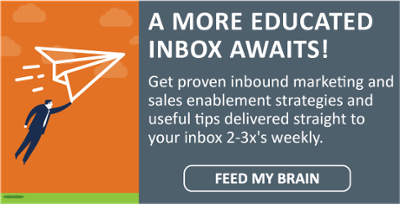CRM Expert Weighs in on 5 Critical Issues that Stop CPA and Other Professional Service Firms From Achieving CRM Success
A Special Guest post by Jeff Bloch, President, North Shore CRM
 CRM technology has evolved since the early days of Act! and Goldmine. Gone are the days of CRM as an “electronic rolodex.” Digital marketing, software as a service (SAAS), business intelligence and ERP integration have re-shaped the landscape. Regardless, one fundamental concept is clear: CRM isn’t an application, it’s a discipline. There are many CRM solutions to choose from. The following categories apply whether you’re deploying Microsoft Dynamics CRM across 300 users or rely exclusively on your contacts in Outlook or Gmail.
CRM technology has evolved since the early days of Act! and Goldmine. Gone are the days of CRM as an “electronic rolodex.” Digital marketing, software as a service (SAAS), business intelligence and ERP integration have re-shaped the landscape. Regardless, one fundamental concept is clear: CRM isn’t an application, it’s a discipline. There are many CRM solutions to choose from. The following categories apply whether you’re deploying Microsoft Dynamics CRM across 300 users or rely exclusively on your contacts in Outlook or Gmail.
If CRM were an engine, contacts would be the gas… (Have you ever bought “bad gas?”)
You can’t run a digital marketing nurture campaign without having contacts.
However, contact information shouldn’t be evaluated based on volume. How many contacts are in your application? (Who cares?) If your gas tank were on “full” but it contained water that would be bad. The focus should always be the quantity AND the quality of those contacts. People are promoted and/or move between organizations all the time.
Your contact database should be viewed as “fluid.” Always changing. Virtually all CRM applications allow you to run queries based on “create date” and/or “modify date.” When was the last time a contact record was edited? Hint: If the create date and modify date are the same, then the contact was added and has never been updated. Digital marketing relies on your authenticity. An unsubscribe can be the result of something as simple as an incorrect title or a misspelled name.
Security is meant to protect data and establish trust. It shouldn’t create a barrier.
We could write an entire book on this subject!
Almost every CRM solution gives you the open-ended invitation to develop security as complex as you THINK you need. Unfortunately, most organizations accept this invitation (without an RSVP… so rude!).
The problem lies in troubleshooting and managing the complexity once the security model has been established. If your security is highly-customized, you can expect lots of phone calls from your end users: “I can SEE the contact… but I can’t edit it,” or, our favorite: “I JUST added a new contact but once I hit ‘save’, it’s gone.” Expand these scenarios across a few users (or 300 seats) and you’ll spend a lot of time troubleshooting. Was it worth it?
Customizations & Functionality (Pace yourself.)
CRM deployments are not a sprint. They’re a marathon. Endurance is critical. If you’re too ambitious with your initial launch, you risk failure. Launching a CRM solution with opportunity pipeline management, contact management, emails marketing AND event management simultaneously adds a tremendous amount of stress to the process and your team. Don’t let your end users steer the ship.
Many stakeholders fear their end-users. They want to cater to every need. Noble… but not realistic. I’ve seen countless implementations with HUNDREDS of custom fields. Begin by considering the lowest common-denominator: what are the fields EVERYONE needs? From a baseline of “zero” you can’t be all things to all people.
It’s easy to tell end users: “Sure, we can track that!” Before you know it, you’ve created a mess. Look at your implementation in stages or phases. Rolling out functionality with this approach makes it easier for your end-users to focus and “digest.”
Who’s responsible?
“We’re launching CRM… AGAIN?” (Eye-roll)
The success of a CRM implementation is often determined based on the credibility of the team responsible for the project and senior management endorsement. Implementation consultants can be great cheerleaders, but here’s a few critical questions you need to consider:
-
What happens when their part of the engagement ends?
-
Who is the “champion” that will keep the momentum going?
-
Do you have a dedicated resource between the business side of the house and IT?
-
Is someone on the business-side (with no technical skill) responsible?
-
Is someone from IT (without intimate insight into the daily lives of the end users) responsible?
Implementations can fail if there’s “project drift.” Regardless of the size, CRM implementations need an advocate. They need a “data custodian.” They need a leader. There needs to be progress, a way to track that progress and a formal, quantifiable way to measure success. “Stakeholder” is a term we hear often.
Forget the titles… Ask yourself two questions: "Who’s steering the ship?” and “What’s their motivation for success?"
The Value Proposition: “What have you done for me lately?"
Ask yourself this question: “If CRM were to ‘go-down’ (offline), how long would it take for users to complain?”
If the answer is days (or even hours), then you haven’t provided them with value.
Even if the answer is: “moments,” it doesn’t mean you’ve designed the most efficient solution. Your end users are your prospects. You need to “sell them” CRM. Telling people: “If it isn’t in CRM, as far as we’re concerned, it didn’t happen,” isn’t going to work. Many end users don’t want to share their contacts. Many of those same end users also have piles of business cards on their desk that resemble the NYC skyline. What if… you give us your business cards, tell them what electronic publications/ events you’d like to include them in (if any) and, in turn, we’ll send you vCards AND we’ll give you real time notifications when those contacts open, click, unsubscribe or register? Value to the end user.
Salesforce.com, Microsoft Dynamics CRM, Netsuite… They’re significantly different products, but all of the same concepts apply.
Jeff Bloch is the President and Founder of North Shore CRM, a consulting firm based on the premise that CRM isn’t an application it’s a discipline. He can be reached via email or at (516) 297-9000.
.png)








Leave a Comment